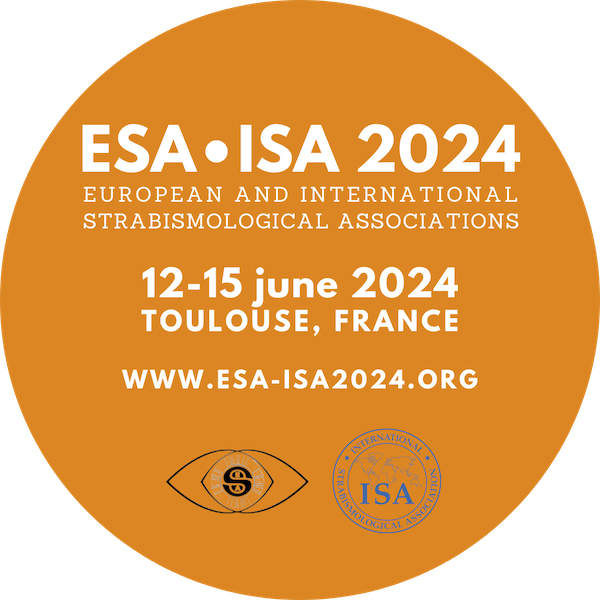
Session: Free papers Session VII - Exotropia et misc.
Bilateral lateral rectus recessions with pre-placed direct scleral sutures in the management of basic intermittent exotropia – 8 year outcomes
Introduction
Basic intermittent exotropia (IXT) is usually managed with either unilateral recession-resection (RR) or bilateral lateral rectus recessions (BLR). A randomised control trial by the Pediatric Eye Disease Investigator Group (PEDIG) comparing these techniques found similar results at 3 years but favoured the RR group at 8 years with lower suboptimal surgical outcomes. We present 8 year outcomes of an alternative BLR technique with more generous recessions and pre-place direct scleral sutures.
Methods
Retrospective recruitment of patients with basic IXT who had BLR between 8 to 10 years ago in our unit by a single surgeon.
Methods (from PEDIG study to allow direct comparison):
1)Inclusion criteria at time of surgery: age 3-10 years, basic IXT, 15-40 prism dioptre (PD) by alternate prism cover test (PCT), stereoacuity <400 arcsec, no prior surgery
2)Suboptimal surgical outcome measures at >8 years post-op:
a.exotropia of >10 PD or esotropia of >6PD by simultaneous PCT (SPCT) at near or distance
b.loss of stereoacuity by 0.6 log arcsec
c.reoperation or non-surgical treatment of IXT
Surgical technique: 1mm more recession per muscle compared to PEDIG BLR group with pre-placed direct scleral sutures (presentation includes video)
Results
25 patients met the inclusion criteria and 14 patients recruited so far. At the time of surgery, the average age was 5 years (3-8), the average near deviation was 21 prism diopters (PD) (10-35) and distance was 29 PD (20-40).
The average time since surgery at post-operative review was 9.5 years (8.9-10.3). 2 patients (14%) had an exotropia >10PD on SPCT. No patients had stereoacuity loss and 1 patient (7%) had a reoperation. The cumulative suboptimal surgical outcome was 21% compared to 68% for BLR and 53% for RR in the PEDIG study.
Conclusions
Although the study numbers are small, the results suggest that BLR with more generous recessions and pre-placed direct scleral sutures may yield better long term outcomes for basic IXT in children.